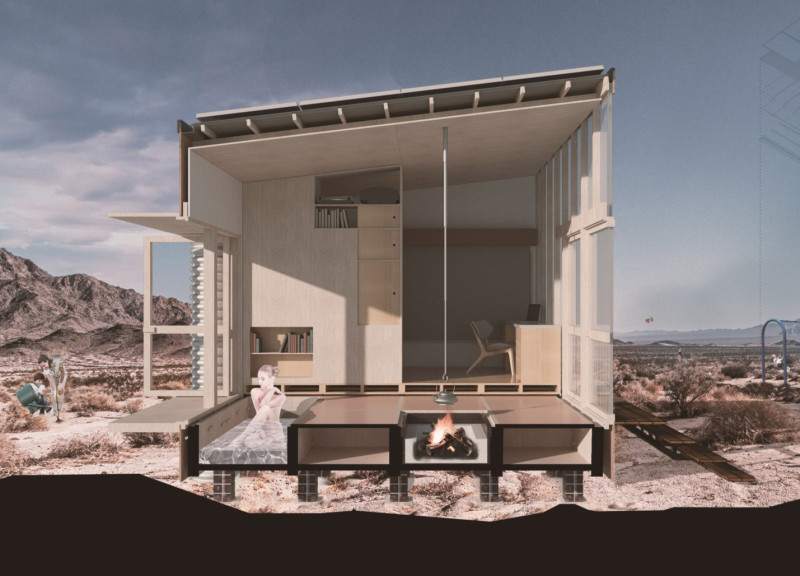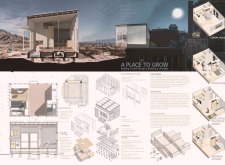5 key facts about this project
Spatial Organization and Functionality
The design features a compact footprint with an open floor plan, optimizing available space for multifunctional use. The layout comprises designated zones such as a central living area, kitchen, workspace, and a meditation garden, accommodating diverse activities. This arrangement supports a lifestyle that balances individual needs with communal interaction, reinforcing the concept of a shared living environment.
Material Selection and Sustainability
A significant aspect of the project is its materiality, prioritizing sustainability. The construction utilizes polycarbonate walls, which enhance energy efficiency by allowing natural light diffusion while providing insulation. Recycled wood planks form the primary structural element, reducing waste and promoting resourcefulness.
The incorporation of solar panels significantly contributes to energy self-sufficiency, underscoring the design’s commitment to ecological responsibility. Furthermore, a rolling platform made from recycled pallets illustrates adaptability within the space, enabling occupants to reconfigure their environment as needed.
Unique Design Approaches
One notable feature of "A Place to Grow" is its dynamic approach to creating a flexible living space. The design promotes various modes of engagement, allowing residents to transition their living environment for activities such as relaxation or communal gatherings. The wooden flooring enhances acoustics, contributing to a pleasant living atmosphere.
The architectural strategy of integrating a CNC plywood grid not only serves a structural support function but also enhances visual aesthetics, showcasing modern construction techniques. The thoughtful consideration of community health through shared spaces contributes positively to occupant well-being.
For those interested in obtaining a comprehensive understanding of "A Place to Grow," it is recommended to explore the architectural plans, sections, and detailed designs that illustrate the innovative ideas embedded within this project. Understanding the technical aspects and design strategies will provide deeper insights into its architectural significance.























